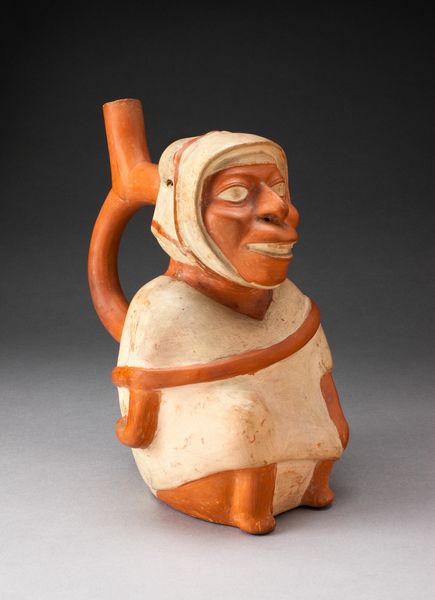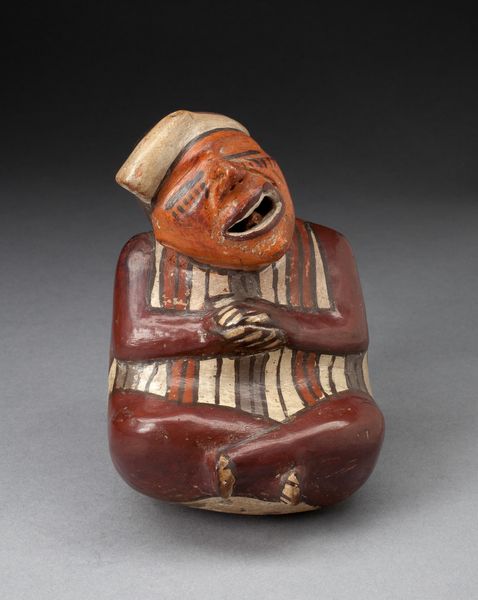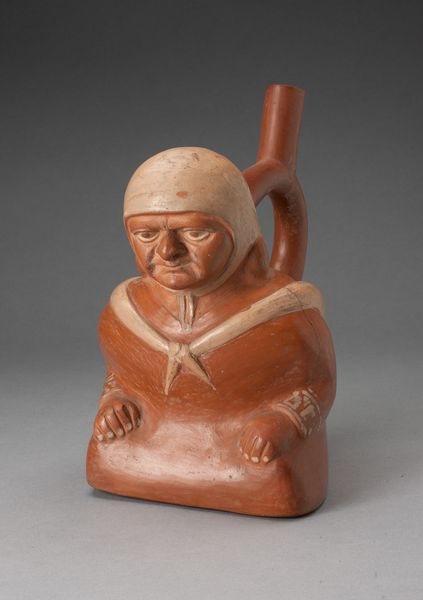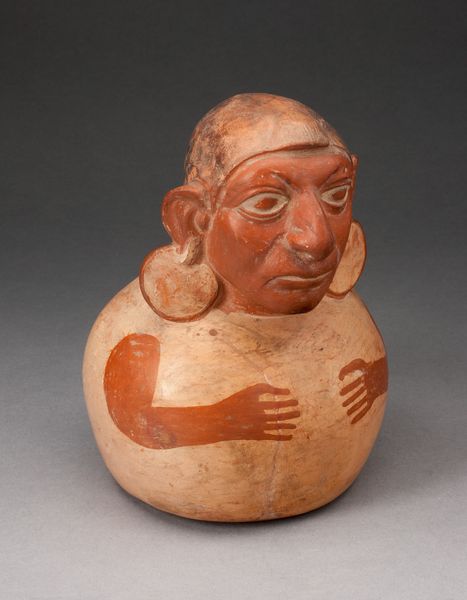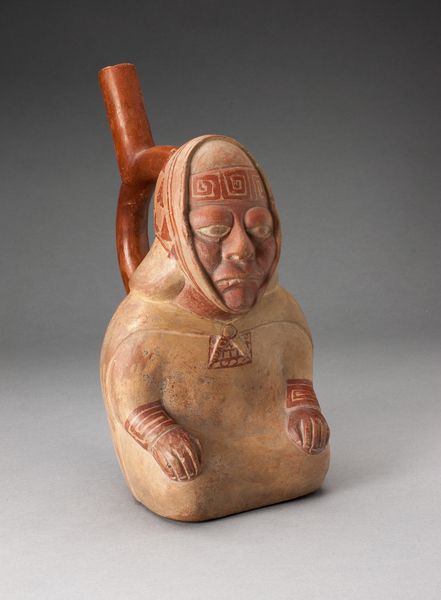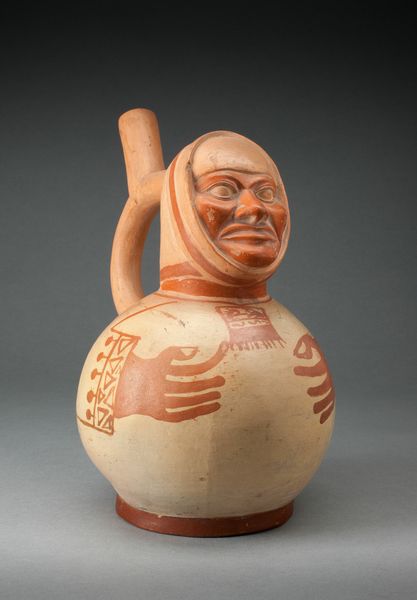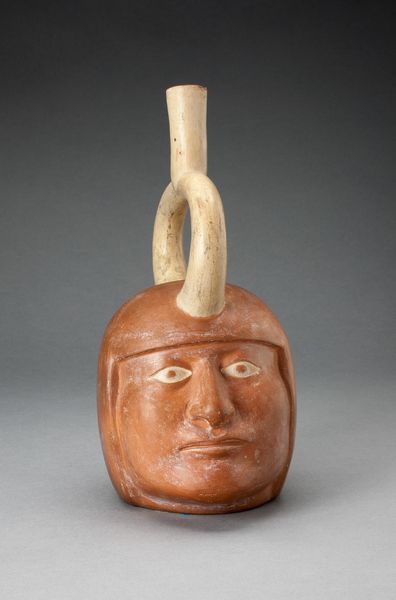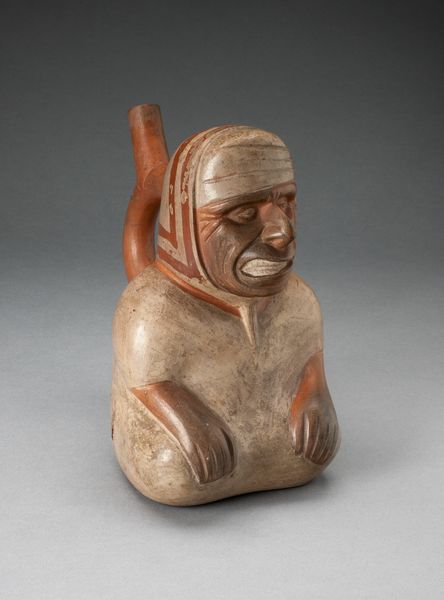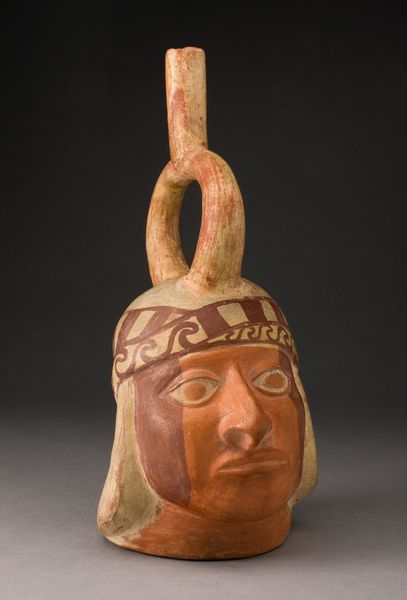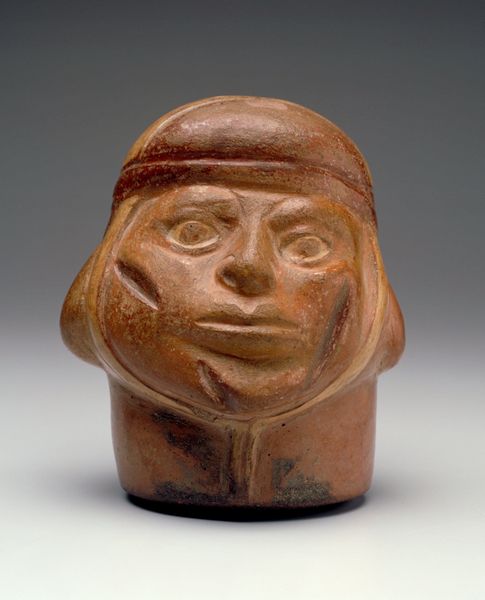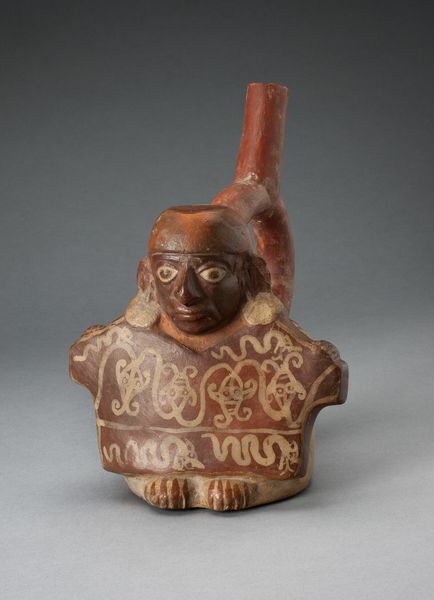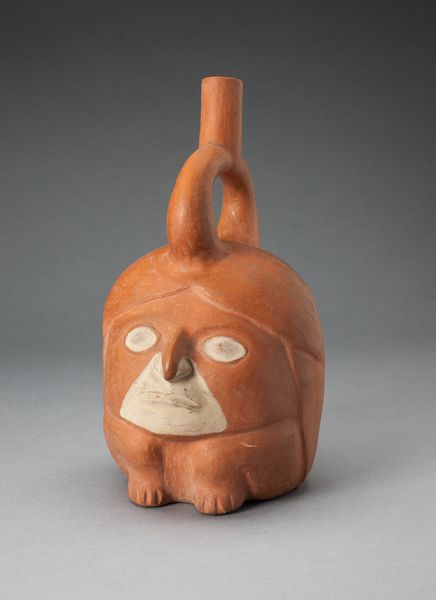
ceramic, sculpture, terracotta
#
portrait
#
ceramic
#
figuration
#
sculpture
#
terracotta
#
indigenous-americas
Dimensions: 34.3 × 21 cm (13 1/2 × 8 1/4 in.)
Copyright: Public Domain
Editor: This is a ceramic vessel, shaped like a seated figure, crafted by the Moche culture sometime between 100 and 500 CE. What I find striking is the incredibly detailed face—it almost seems to be smiling! How do you interpret this work? Curator: Considering the Moche civilization's known social structure, the subject's garments might denote social standing, potentially indicating a warrior or member of the elite class. Think about how visual signifiers of power and identity circulate within a culture. This is further interesting when you view it in contrast to similar portrait vessels found which showcase people from various walks of life. Editor: That's fascinating! The detail of the headdress compared to the simple geometric patterns on the "clothing" now seems really significant. Curator: Exactly. Moche ceramics, including these vessels, were often used in ritual contexts and as offerings. Can you imagine how such a vessel, bearing the likeness of a specific person, would have functioned within such a setting? It is not outside the realms of possibility to view the artistic choices of this indigenous american civilisation, of having social purpose, linked to its cultural practice of death. Editor: So, maybe a way to honor and connect with a person’s spirit, making them a continued part of the community through ritual? That gives the piece a whole new dimension compared to just admiring it for its artistic quality. Curator: Precisely! Understanding its socio-cultural role challenges us to consider art’s agency in shaping societal beliefs and behaviors. I have also found examples of vessels that are said to document war, I now think there could be potential significance in these portraits in regard to remembering great leaders and/or celebrating the victor in battle. What do you think? Editor: That's incredible, considering how portraiture functions in contemporary society for remembrance and honouring of historical figures. It's amazing how the Moche culture developed similar traditions. Curator: Yes. It’s through understanding the object’s public role and imagery in society that we enrich our appreciation of it, understanding the cultural intention of portrait art over thousands of years.
Comments
No comments
Be the first to comment and join the conversation on the ultimate creative platform.
